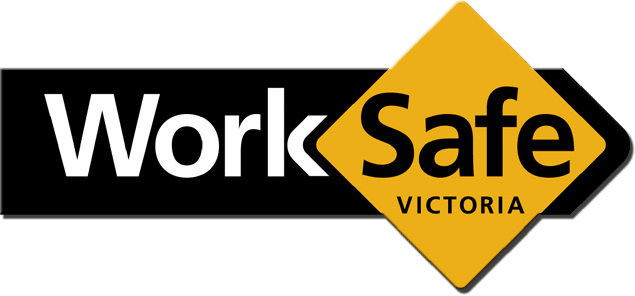
From 1 July 2024, new requirements for Incident notification for plant and equipment under the Occupational Health and Safety Regulations 2017 (OHS Regulations) and the Equipment (Public Safety) Regulations 2017 (EPS Regulations) will commence.
This includes scaffold tampering or un authorised removal / adjustments of scaffolding components.
How will the new requirements impact employers and self-employed people?
From 1 July 2024, there will be new types of plant and equipment that you will need to notify WorkSafe about if they are involved in an incident.
When do the new requirements come into effect?
The changes come into effect on 1 July 2024.
What type of incidents are notifiable for plant and equipment?
Occupational Health and Safety Regulations 2017
Under the OHS regulations, from 1 July 2024 employers and self-employed persons are required to notify WorkSafe when they become aware of an incident that immediately or imminently exposes a person a serious risk to their health or safety due to collapse, overturning, failure, or malfunction of, or damage to:
- plant that lifts or moves persons or materials (not including a ship, boat, aircraft, or vehicle designed to be used primarily as a means of transport on a public road or rail)
- pressure equipment
- tractors
- earth moving machinery
- scaffolds
- temporary access equipment
- explosive-powered tools
- turbines
- amusement structures
Equipment (Public Safety) Regulations 2017
The EPS Regulations apply to non-workplaces and set out a range of duties relating to the design, manufacture, importation, supply and use of prescribed equipment to ensure public safety.
Under the EPS Regulations, from 1 July 2024, persons in charge of prescribed equipment at an equipment site are required to notify WorkSafe when they become aware of an incident that immediately or imminently exposes a person a serious risk to their health or safety resulting from the collapse, overturning, failure or malfunction of, or damage to:
- equipment that lifts or moves persons or materials (other than a ship, boat, aircraft or vehicle designed to be used primarily as a means of transport on a public road or by rail)
- pressure equipment
- tractors
- earthmoving machinery
- scaffolds
- temporary access equipment
- explosive-powered tools
- turbines
- amusement structures
What is incident notification?
Under OHS laws, employers and self-employed persons are required to notify WorkSafe about fatalities, serious injuries or health and safety incidents that happen in a workplace.
Under the EPS Regulations, persons in charge of prescribed equipment at an equipment site are required to notify WorkSafe about incidents involving specified equipment which expose a person in the immediate vicinity of the equipment to an immediate risk to their health or safety.
More information: https://www.worksafe.vic.gov.au/resources/guide-incident-notification
What has changed?
Occupational Health and Safety Regulations 2017
From 1 July 2024, under the OHS regulations, the list of plant that is prescribed for incident notification has changed. An expanded type of plant will now require notification if involved in an incident.
Equipment (Public Safety) Regulations 2017
From 1 July 2024, under the EPS regulations, the circumstances in which persons in charge of prescribed equipment at an equipment site will be required to notify WorkSafe of incidents involving plant will change.
From 1 July, notification will be required for prescribed plant and equipment if the incident immediately or imminently exposes a person a serious risk to their health or safety.
Before 1 July, notification is required for incidents involving prescribed plant that exposed a person in the immediate vicinity of the equipment to an immediate risk to that person’s health or safety.
Why were changes made?
Before the new regulations, the list of plant that were prescribed as notifiable was relatively limited and did not include many types of plant commonly used that pose a higher risk such as tractors, quad bikes, forklifts, excavators and mining and quarrying equipment.
These changes will mean that WorkSafe will be better informed about serious safety incidents involving plant.
What do I do if I am not sure what incidents are notifiable?
If you are unsure what incidents to report, please contact WorkSafe 13 23 60.
Serious risk
‘Serious risk’ is not a defined term in the OHS Act and, as a result, the plain or ordinary meaning of the word applies.
WorkSafe considers that the ordinary meaning of ‘serious risk’ is a ‘significant risk, which has a real chance of materialising’. For an incident under section 37(2) to be considered a ‘serious risk’, it must have a real chance of immediately or imminently exposing a person to a risk to their health or safety.
WorkSafe considers that the term ‘serious risk to the health or safety of a person’ means:
- that exposure to the incident created a risk which, if it had eventuated, could have resulted in death or a serious injury or illness of a person (seriousness of potential harm), and
- the level of risk was not minor, in that there was a real likelihood of the risk eventuating (likelihood of incident occurring)
Both the potential seriousness of harm and the likelihood of harm occurring must be identified for an incident under section 37(2) to be considered a serious risk to the health or safety of a person.
Immediate or imminent exposure
The terms ‘immediate or imminent exposure (to an incident)’ are not defined terms in the OHS Act. As such, the plain or ordinary meaning of the words applies.
WorkSafe considers that ‘imminent’ means ‘likely to occur at any moment’. WorkSafe considers that ‘immediate’ means ‘happening or done without delay’.
WorkSafe considers ‘immediate exposure’ to mean the person was exposed to a serious risk to their health or safety when the incident occurred, including where the person was not injured or where an illness may arise later due to exposure to the incident.
WorkSafe considers ‘imminent exposure’ to mean a person was or would have been exposed to a serious risk to their health or safety when the incident occurred. For example, a person would have been exposed to the risk even though they may not have been in the vicinity when the incident occurred because they were there prior to the incident, or ordinarily would have been in the vicinity or were nearby when the incident occurred.






